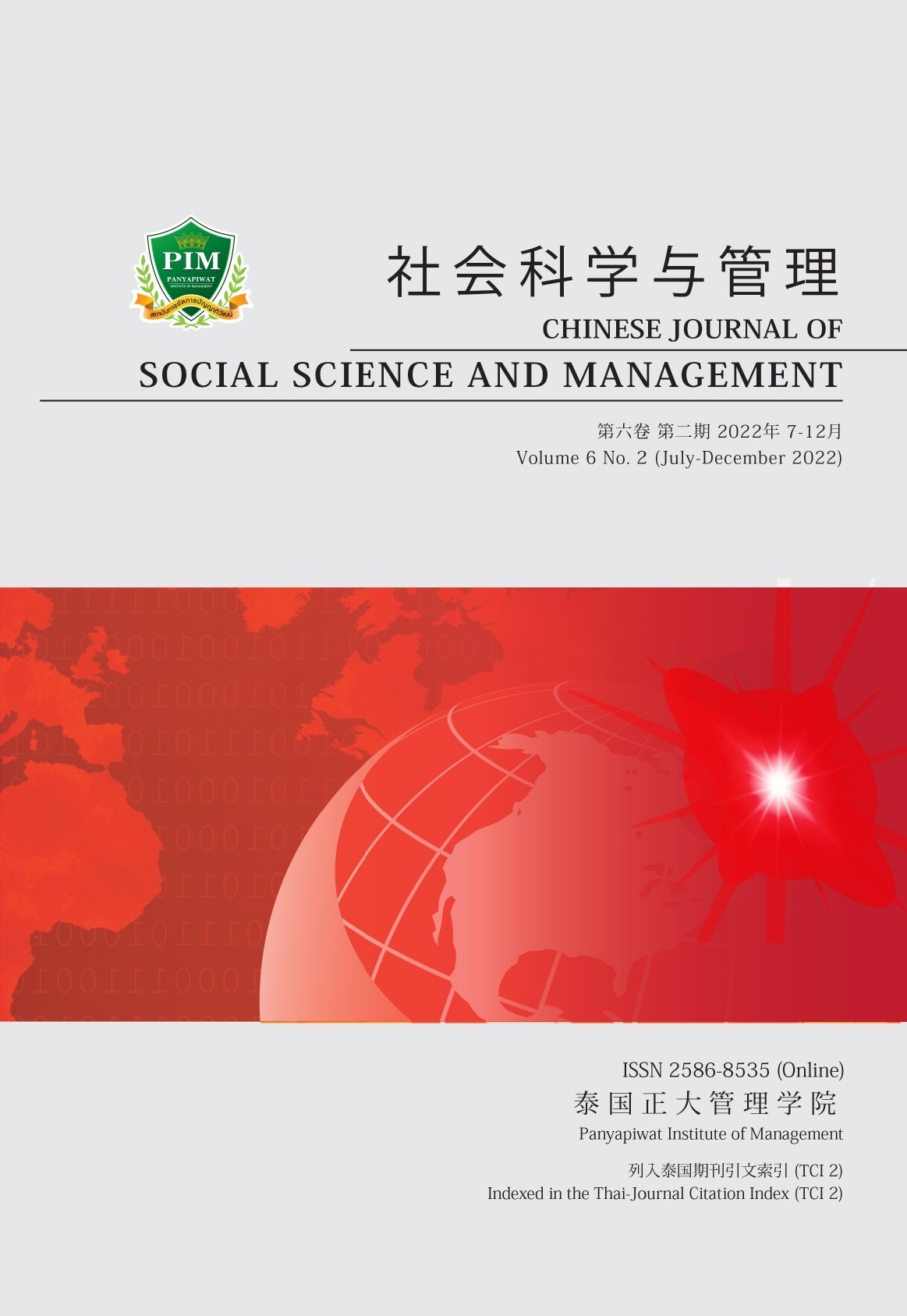THE RELATIONSHIP BETWEEN ONLINE WORD-OF-MOUTH, PERCEPTION OF INNOVATIVENESS AND PURCHASE INTENTION
Main Article Content
Abstract
With the rise and development of online shopping and social media, a large number of user generated online word-of-mouth affect the purchase behavior of consumers. Based on the Technology Acceptance Model, attribution theory and Elaboration Likelihood Model, this paper analyzes the mechanism of online word-of-mouth on the purchase intention of new products from the perspective of consumers, and on this basis, examines the intermediary role of perceived innovation and the regulatory role of consumer innovation. In this study, 408 data samples were collected, and structural equation model was used to test the hypothesis. The results show that: online word-of-mouth has a significant positive impact on consumers’ perceived innovation and purchase intention; perceived innovation plays a part of intermediary role in the relationship between online word-of-mouth and purchase intention; consumer innovation positively regulates the impact of perceived innovation on consumers’ purchase intention. Finally, the contribution of the model in theory and practice and the future research direction are given.
Article Details

This work is licensed under a Creative Commons Attribution-NonCommercial-NoDerivatives 4.0 International License.
Chinese Journal of Social Science and Management Editorial Division
The Office of Research and Development, Panyapiwat Institute of Management
85/1 Moo 2, Chaengwattana Rd., Bang Talat, Pakkred, Nonthaburi 11120, Thailand
Tel. 02 855 01048 E-mail: cjssm@pim.ac.th
References
Ajzen, I. (1991). The theory of planned behavior. Organizational Behavior and Human Decision Processes, 50(2), 179-211.
Castano, R. M., Sujan, M., & Harish, S. (2008). Managing consumer uncertainty in the adoption of new products: Temporal distance and mental simulation. Journal of Marketing Research, 45(6), 320-336.
Cheung, C. M. K., & Lee, M. K. O. (2012). What drives consumers to spread electronic word in online consumer-opinion platforms. Decision Support Systems, 53(1), 218-225.
Chu, S. C., & Kamal, S. (2008). The effect of perceived blogger credibility and argument quality on message elaboration and brand attitudes. Journal of Interactive Advertising, 8(2), 26-37.
Cierpicki, S., Malcolm, W., & Byron, S. (2000). Managers’ knowledge of marketing principles: The case of new product development. Journal of Empirical Generalizations in Marketing Science, 5, 771-790.
Dellarocas, C., Zhang, X. M., & Awad, N. F. (2007). Exploring the value of online product reviews in forecasting sales: The case of motion pictures. Journal of Interactive Marketin, 21(4), 23-45.
Dodds, W. B., Mrnroe, K. B., & Grewal, D. (1991). Effects of price, brand, and store information on buyers’ product evaluations. Journal of Marketing Research, 28(3), 307-319.
Fishbein, M., & Ajzen, I. (2010). Predicting and changing behavior: The reasoned action approach. Taylor & Francis.
Flynn, L. R, Ronald E. G., & Jacqueline K. E. (1996). Opinion leaders and opinion seekers: Two new measurement scales. Journal of the Academy of Marketing Science, 24(2), 137-147.
Forman, C., Ghose, A., & Wiesenfeld, B. (2008). Examining the relationship between reviews and sales: The role of reviewer identity disclosure in electronic markets. Information Systems Research, 19, 291-313.
Goode, M. R., Dahl, D. W., & Moreau, C. P. (2012). Innovation aesthetics: The relationship between category cues, categorization certainty, and newness perceptions. Journal of Product Innovation Management, 30(2), 192-208.
Gregan-Paxton, J., Hibbard, J. D., Brunei, F. F., & Azar, P. (2002). So that’s what that is: Examining the impact of analogy on consumers’ knowledge development for really new products. Psychology and Marketing, 19(6), 533-550.
Hao, Y. Y., Ye, Q., & Li, Y. J. (2010). Research on the influencing factors of online review usefulness based on film review data. Journal of Management Science, 13(8), 78-88.
Hennig-Thurau, T., Walsh, G., & Walsh, G. (2004). Electronic word-of-mouth: Motives for and consequences of reading customer articulations on the internet. International Journal of Electronic Commerce, 8(2), 51-74.
Hoeffler, S. (2003). Measuring preferences for really new products. Journal of Marketing Research, 40(4), 406-420.
Johnston, A. C., & Warkentin, M. (2010). The influence of perceived source credibility on end user attitudes and intentions to comply with recommended IT actions. Journal of Organizational and End User Computing, 22(3), 1-21.
Lafferty, B. A., & Ronald, E. G. (2004). How influential are corporate credibility and endorser attractiveness when innovators react to advertisements for a new high-technology product? Corporate Reputation Review, 7(1), 24-36.
Lee, Y., & O’Connor, C. G. (2003). The impact of communication strategy on launching new products: The moderating role of product innovativeness. Journal of Product Innovation Management, 20, 4-21.
Park, C., & Lee, T. M. (2009). Information direction, website reputation and eWOM effect: A moderating role of product type. Journal of Business Research, 62(1), 61-67.
Park, D. H., Lee, J., & Han, I. (2007). The effect of on-line consumer reviews on consumer purchasing intention: The moderating role of involvement. International Journal of Electronic Commerce, 11(4), 125-148.
Rogers, E. M. (2003). Diffusions of innovations. Free Press.
Selinger, M., Dahl, D., & Moreau, P. (2006). Is this product really new? A study on the effect of category information and certainty on newness evaluations for newtomarket products. Advances in Consumer Research, 33(1), 323-324.
Sethi, R., Smith, D. C., & Park, W. (2001). Cross-function product development teams, creativity, and the innovativeness of new consumer products. Journal of Marketing Research, 38(1), 73-85.
Song, J., & Zahedi, F. M. (2005). A theoretical approach to web design in e commerce: A belief reinforcement model. Management Science, 51(8), 1219-1235.
Song, X. B. (2011). Research on the relationship value between consumers and online stores. Intellectual Property Press.
Stock, R. M., & Zacharias, N. A. (2013). Two sides of the same coin: How do different dimensions of product program innovativeness affect customer loyalty? Journal of Product Innovation Management, 30(3), 516-532.
Yiu, C. S., Grant, K., & Edgar, D. (2007). Factors affecting the adoption of Internet banking in Hong Kong-Implications for the banking sector. International Journal of Information Management, 27(5), 336-351.
Zolfagharian, M. A., & Paswan, A. (2009). Perceived service innovativeness, consumer trait innovativeness and patronage intention. Journal of Retailing and Consumer Services, 16(2), 155-162.


